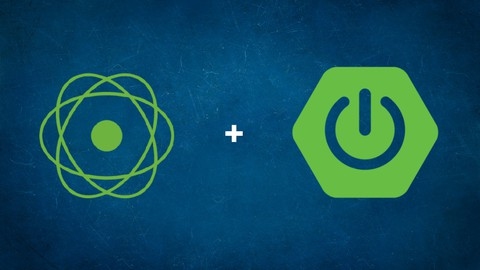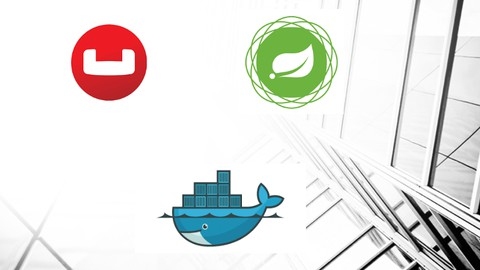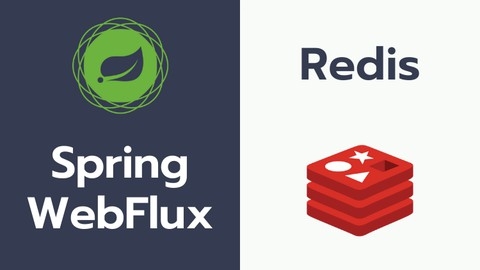Spring WebFlux is a powerful framework for building reactive web applications in Java.
It’s based on the principles of reactive programming, which allows for building highly scalable and resilient applications that can handle a large number of concurrent requests with minimal resource consumption.
By learning Spring WebFlux, you can develop modern, efficient, and responsive applications that can meet the demands of today’s web.
Finding the right Spring WebFlux course on Udemy can be a bit overwhelming.
There are so many options available, and it can be tough to know which one is right for you.
You’re probably looking for a course that provides a comprehensive understanding of the framework, covers practical examples, and helps you build real-world applications.
Based on our research and analysis, we’ve identified Build Reactive MicroServices using Spring WebFlux/SpringBoot as the best course overall on Udemy for learning Spring WebFlux.
This course provides a thorough introduction to reactive programming and Spring WebFlux, covering everything from the basics to advanced concepts.
It includes hands-on exercises and real-world examples, making it an excellent choice for both beginners and experienced developers.
While Build Reactive MicroServices using Spring WebFlux/SpringBoot is our top pick, there are other great Spring WebFlux courses available on Udemy that might better suit your specific needs and learning style.
Keep reading to explore our recommendations for other excellent courses that can help you master Spring WebFlux and build amazing reactive applications.
Build Reactive MicroServices using Spring WebFlux/SpringBoot
You’ll start by grasping the fundamentals of reactive programming, exploring its benefits and core concepts like Reactive Streams and Project Reactor.
Project Reactor, a Java library for reactive programming, will be your tool for creating and manipulating reactive streams using Flux and Mono.
Next, you’ll dive into building reactive REST APIs with Spring WebFlux, mastering RestController and @WebFluxTest for robust testing.
You’ll learn to handle diverse scenarios, including creating infinite streams using Server-Sent Events (SSE), integrating with MongoDB for data persistence, and utilizing ResponseEntity for dynamic response status adjustments.
The course takes you beyond the basics, introducing the functional web module in Spring WebFlux for a more declarative approach to API development.
You’ll become proficient in exception handling with GlobalErrorHandler and implement bean validation using ControllerAdvice.
Finally, you’ll put your knowledge into practice by building real-world microservices.
You’ll learn to connect multiple services using Spring WebClient, a non-blocking HTTP client ideal for reactive applications.
You’ll tackle network exceptions, simulate errors using WireMock, and master retry strategies with backoff mechanisms.
The course also covers Server-Sent Events (SSE) and Sinks for building streaming endpoints.
You’ll have gained hands-on experience with essential concepts like Flux, Mono, WebClient, ReactiveMongoRepository, and ResponseEntity.
You’ll also master error handling techniques and implement robust validation practices.
Spring WebFlux Masterclass: Reactive Microservices [2024]
This course is a comprehensive dive into the world of reactive programming with Spring WebFlux, equipping you to build modern, scalable, and resilient microservices.
You’ll start by understanding the fundamental differences between traditional and reactive APIs and how reactive programming can dramatically enhance performance and efficiency.
The course then takes you step-by-step through setting up projects with Spring Data R2DBC, a powerful tool for working with databases in a reactive way.
You’ll learn how to perform CRUD operations on your data using reactive data sources like R2DBC, building a solid foundation for your microservices.
You’ll go beyond the basics, exploring pagination and complex queries to efficiently manage large datasets.
Next, you’ll delve into the design and implementation of reactive CRUD APIs using Spring WebFlux.
You’ll master techniques like error handling and validation, learning how to build secure and reliable APIs with features like WebFilters for authentication and authorization.
The course then guides you towards more advanced topics like functional endpoints, where you’ll learn to define your APIs in a declarative and concise way.
You’ll also explore the power of WebClient, a non-blocking HTTP client, to interact with external services and build robust integrations within your microservices architecture.
Finally, the course culminates in a comprehensive final project.
You’ll build a trading platform, putting into practice all the knowledge and skills acquired throughout the course.
You’ll learn how to implement complex logic, handle real-time data streams, and effectively manage concurrency and performance.
This course is a valuable resource for developers looking to embrace the benefits of reactive programming and build modern, efficient, and scalable microservices.
The combination of practical exercises and real-world examples will leave you well-equipped to tackle complex projects in the world of reactive programming.
Build Reactive REST APIs with Spring WebFlux and Spring Boot
You will embark on a journey, starting with setting up your development environment.
You will install essential tools like JDK, Maven, and Spring Tool Suite (STS), and familiarize yourself with Postman, a valuable tool for testing APIs.
This course doesn’t shy away from practical application.
You will gain hands-on experience with these tools, ensuring a smooth development process.
Next, you will delve into the core concepts of reactive programming.
You’ll explore traditional REST APIs and their limitations, discovering how reactive programming provides efficient solutions.
This course provides a deep dive into essential concepts like back pressure, event-driven streams, and the reactive stream specification.
You will learn about Project Reactor, a leading reactive library, and master its building blocks, Flux and Mono, using functions like ‘filter,’ ‘map,’ and ‘flatMap.’
The course then guides you through building reactive REST APIs using Spring WebFlux.
You will create both GET and POST APIs, mastering different approaches to routing requests.
You will explore Spring Data R2DBC, a powerful tool for reactive database interactions, enabling you to build fast, scalable applications.
The course culminates with an exciting project: building a video streaming platform like YouTube.
This practical application of the course content solidifies your understanding of reactive programming and Spring WebFlux.
Master Reactive MongoDB with Spring WebFlux
This course teaches you how to build reactive applications using Spring WebFlux and MongoDB.
You start with the basics of reactive programming and how it creates responsive and efficient web applications.
You then learn about the Spring WebFlux architecture and how to use it to build your applications.
The course guides you through setting up a MongoDB replica set with Docker, a popular tool for managing applications, and connecting to it with Robo3T, an application for working with MongoDB.
You will then discover how to create a Spring WebFlux project and configure the reactive MongoDB driver to interact with your database.
You learn how to implement reactive REST APIs, which allow different applications to communicate with each other.
You will explore how to implement CRUD operations (create, read, update, and delete) on your data and use Postman, a tool for testing APIs, to ensure everything works properly.
This course teaches you how to use reactive error handling, a technique for managing errors in a reactive application.
You will dive into MongoDB’s query language, MQL, and discover ways to use it, including auto-generated queries, annotated queries, and MongoTemplate-based criteria queries.
You learn how to use reactive MongoDB aggregates, which allow you to perform complex data analysis, and then move on to reactive MongoDB transactions, which help ensure your data is always consistent.
Finally, you discover GridFS, a tool for storing large files in MongoDB, and learn how to implement reactive full-text search.
You will be able to build your own powerful and scalable reactive applications using Spring WebFlux and MongoDB.
Master Reactive Couchbase with Spring WebFlux
You’ll start by understanding the fundamentals of reactive programming and reactive systems, followed by an in-depth exploration of the Spring WebFlux architecture.
Next, you’ll dive into the Couchbase platform, its architecture, and data model.
The course will guide you through setting up a development environment, including a Docker-based Couchbase cluster.
With a solid foundation in place, you’ll create a Spring WebFlux project and configure the reactive Couchbase driver.
The course then focuses on implementing a reactive REST API using Spring WebFlux and the reactive Couchbase driver.
You’ll learn to create a data model, implement save, read, update, and delete operations, and test them using Postman.
The course covers the differences between primary and secondary indexes in Couchbase and how to implement optimistic locking for update operations.
Error handling is a crucial aspect of any application, and the course dedicates sections to reactive error handling with onErrorResume and global reactive error handling in Spring WebFlux.
You’ll also explore auto-generated N1QL queries with Spring WebFlux, including findByField, findByFieldLike, findByFieldOrderBy, and findByFieldNot.
Advanced topics include reactive N1QL-based query annotated queries, covering findByField, findByFieldLike, count, IN queries, nested inner queries, JOIN queries, and projections.
The course also covers reactive transactions with Spring WebFlux and Couchbase, ensuring data integrity in your applications.
Full-text search is a powerful feature in Couchbase, and you’ll learn how to create an FTS index, perform simple and phrase searches, regex and wildcard searches, prefix and all-field searches, and conjunction and disjunction field queries using the reactive FTS capabilities of Couchbase and Spring WebFlux.
Throughout the course, you’ll gain hands-on experience by implementing various features and testing them, ensuring a solid understanding of the concepts.
Redis & WebFlux: Scalable Reactive Microservices
The course starts by introducing Redis, a popular in-memory data store, and its need for building scalable applications.
You’ll learn how to set up Redis locally and with Docker.
From there, you dive into Redis’ core data structures like key-value pairs, hashes, lists, sets, and sorted sets.
The course covers using Redis as a message queue, rate limiter, and priority queue.
You’ll also learn about Redis transactions, saving data to disk, and a handy commands cheat sheet.
The course then shifts to Redisson, a Redis client for Java, covering its setup, key-value operations, maps, lists, queues, and more.
You’ll build a local cached map and learn about event listeners for expired/deleted keys.
Caching is a major focus, covering the cache-aside pattern and annotations like @Cacheable, @CacheEvict, and @CachePut in Spring’s caching abstraction.
You’ll apply these concepts to a City Service application.
Performance testing is explored using JMeter, comparing different caching strategies like a local cached map on a Product Service example.
An assignment has you build a Trending Service tracking product visits.
The course covers building a real-time chat application with WebSockets, broadcasting messages, and persisting chat history in Redis.
You’ll also build a GeoSpatial restaurant locator app using Redis’ geo data structure.
Other topics include Redis authentication, access control lists, and Redis configuration.
You’ll use tools like Maven, Docker, Postgres, Spring WebFlux, and integrate with HTML/JavaScript frontends.
Reactive Microservices Design Patterns [Hands-On]
This Spring WebFlux course dives deep into building reactive microservices, focusing on practical application through real-world examples.
You’ll start with the Gateway Aggregator Pattern, learning how to unify data from various sources, like creating a single view from multiple external services.
Then you’ll move onto the Scatter Gather Pattern, which teaches you to fetch data from multiple sources concurrently, useful for services like comparing flight prices from JetBlue and Frontier.
You’ll then tackle the Orchestrator Pattern, which empowers you to design complex workflows, handling tasks sequentially or in parallel.
Imagine building a system where you process payments, manage inventory, and handle shipping, all within a structured microservice architecture.
Next, the Splitter Pattern helps you divide a single request into smaller chunks, like when a user books a trip requiring separate car and hotel reservations.
This course doesn’t stop at design patterns.
You’ll explore resilience patterns for building robust applications.
Imagine your service encounters an error - you’ll learn to use the Retry Pattern to automatically retry the failed operation.
The Timeout Pattern helps you set limits, preventing your application from waiting indefinitely for responses.
You’ll explore the Circuit Breaker Pattern to stop cascading failures, ensuring one malfunctioning service doesn’t bring down your entire application.
Finally, the Rate Limiter Pattern helps you manage incoming traffic, preventing your system from being overwhelmed by too many requests, and the Bulkhead Pattern helps isolate failures, keeping your application stable.


![Spring WebFlux Masterclass: Reactive Microservices [2024]](/img/best-reactive-programming-courses-udemy/3868548_SpringWebFluxMasterclassReactiveMicroservices2024.jpg)




![Reactive Microservices Design Patterns [Hands-On]](/img/best-spring-webflux-courses-udemy/4651564_ReactiveMicroservicesDesignPatternsHands-On.jpg)